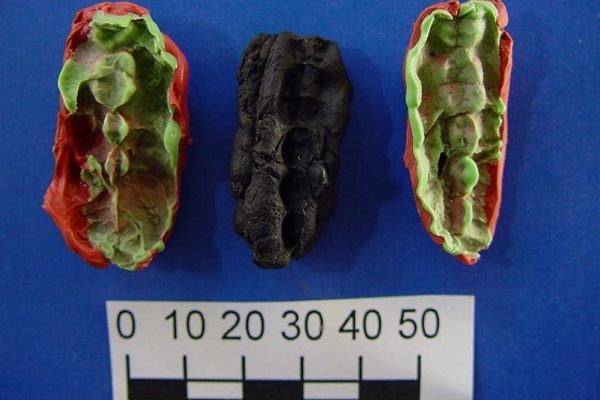Halloween Day 26: Pick Your Poison
31 Days of Halloween: On Atlas Obscura this month, every day is Halloween. Stop by the blog every day this month for true tales of the unquiet dead. Come for the severed heads, stay for the book bound in human skin. Every story is true, and each one is a real place you can visit. We dare you.
.jpg)
Deadly Nightshade was once used as a beauty aid. An innocent looking flower left citizens of Jamestown in a drugged stupor for eleven days, and Mozart went to his death believing he was poisoned by a draught typically concealed as a saintly cure-all.
In this, the era of the gun, poisoning seems remote, romantic and quaint - but at one time Arsenic poisoning was so common in France it was dubbed poudre de succession, or “inheritance powder.”
Even those without enemies, murderous spouses or politically inconvenient opinions had reasons to be concerned. Poisons were everywhere, from quack medicines full of arsenic to cosmetic treatments made of lead. And of course, to paraphrase the famous toxicologist Paracelsus, “the dose makes the poison” - nicotine, water and caffiene (among many, many other things) can all kill when used in excess.
Even today, there is reason to be wary - common plants you see in your house or office everyday often turn out to be surprisingly poisonous: The Peace Lily favored by reception desks everywhere are poisonous if eaten, and that Philodendron in the bathroom could easily kill a cat or a child. The much maligned Poinsettia, on the other hand, turns out to be not much of a threat.
But for those with real enemies, the specters in the shadows were terrifying.
Catherine de Medici way have lead the charge in the reputation of poisoners being both women and Italians, as well as launching a two hundred year long period of frequent political poisoning attempts and a widespread terror of same. Catherine herself may have been maligned, but toxicology recipes for common poisons and references to inconvenient enemies have been found among the Medici family papers. Queen Elizabeth the first narrowly escaped a poisoning plot, and Queen Margarete von Habsburg’s bleeding corpse was almost certainly a result of poison.
The most feared of Enlightenment-era poisons was the dreaded Aqua Tofana, said to be tasteless and odorless, and concealed in all manner of clever devices from ladies powders to holy water extracted from Saint Nicholas’ oozing bones (no, really) . Mozart apparently suspected that he had been done in by this notorious - but possibly fictional - killer, but the smart money is on desanguination, courtesy of his blood-letting happy doctors.
WHAT YOU DO NOT SMELL IS CALLED IOCANE POWDER
NEVER GO UP AGAINST A SICILIAN WHEN DEATH IS ON THE LINE
ALNWICK POISON GARDEN, Alnwick, England
CATHERINE DE MEDICI’S CHAMBER OF SECRETS, Bloise, France
MANNA OF ST. NICHOLAS, Bari, Italy












Follow us on Twitter to get the latest on the world's hidden wonders.
Like us on Facebook to get the latest on the world's hidden wonders.
Follow us on Twitter Like us on Facebook